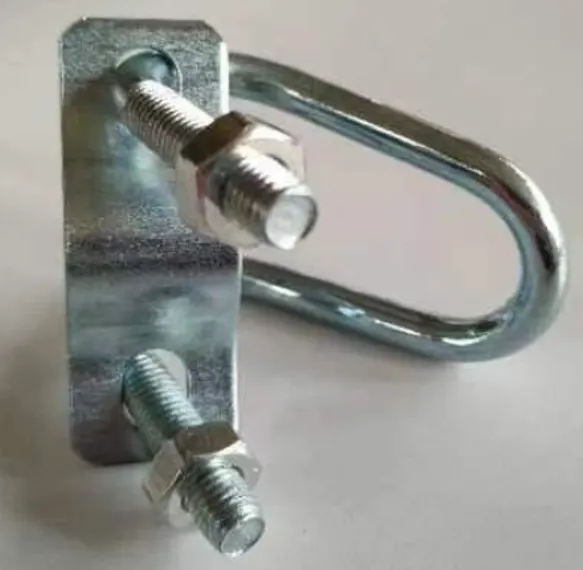loading...
- No. 9, Xingyuan South Street, Dongwaihuan Road, Zaoqiang County, Hengshui, Hebei, China
- admin@zjcomposites.com
- +86 15097380338
- Welcome to visit our website!
glass fiber reinforced polymer rebar
The Rise of Glass Fiber Reinforced Polymer (GFRP) Rebar in Construction
In recent years, the construction industry has been witnessing a significant shift towards the use of advanced materials that promise enhanced performance and longevity. One such material that has been gaining traction is Glass Fiber Reinforced Polymer (GFRP) rebar. Traditional steel rebar has been the cornerstone of reinforced concrete structures, but the drawbacks associated with it have prompted engineers and architects to explore alternative options. GFRP rebar offers several advantages that make it an appealing choice for modern construction practices.
What is GFRP Rebar?
GFRP rebar is a composite material made from fiberglass and polymer resin. The process involves embedding glass fibers in a resin matrix, resulting in a lightweight, high-strength reinforcement that outperforms traditional materials in certain aspects. The incorporation of glass fibers provides GFRP with remarkable tensile strength, while the polymer matrix ensures resistance to corrosion, making it an ideal choice for various construction applications.
Advantages of GFRP Rebar
1. Corrosion Resistance One of the most notable benefits of GFRP rebar is its resistance to corrosion. Unlike steel, which is susceptible to rust when exposed to moisture, chlorides, and other environmental factors, GFRP remains unaffected by these elements. This property is particularly advantageous in coastal areas, regions with high humidity, and environments exposed to de-icing salts.
2. Lightweight Material GFRP rebar is significantly lighter than steel, making it easier to handle, transport, and install. This reduction in weight can lead to lower transportation costs and quicker construction times, which is a considerable advantage on busy construction sites where efficiency is crucial.
3. High Strength-to-Weight Ratio Despite its lightweight nature, GFRP rebar has a high tensile strength, often exceeding that of traditional steel rebar. This strength allows for the use of thinner concrete slabs and reduced overall material usage, leading to cost savings and decreased environmental impact.
glass fiber reinforced polymer rebar

4. Non-Magnetic and Non-Conductive GFRP rebar is non-magnetic and non-conductive, making it an excellent choice for applications in structures where electromagnetic interference must be minimized, such as in tunnels, bridges, and areas near sensitive electronic equipment.
5. Durability and Longevity The longevity of structures reinforced with GFRP is significantly enhanced due to its resistance to environmental factors. This durability leads to lower maintenance costs over the lifespan of the structure, creating a compelling case for its use in long-term projects.
Applications of GFRP Rebar
Given its unique characteristics, GFRP rebar is being utilized in a variety of construction applications. It is particularly effective in
- Bridges The lightweight nature and corrosion resistance make GFRP an excellent choice for bridge construction, particularly in areas prone to salt exposure. - Marine Structures For piers, docks, and other marine applications, GFRP’s immunity to saltwater corrosion prolongs the life of the structures. - Seismic Zones In regions prone to seismic activity, GFRP can enhance the ductility of concrete structures, helping them withstand the forces generated during an earthquake. - Airport Runways The non-conductive and non-magnetic properties make GFRP ideal for use in airport runway projects where electronic equipment is in operation.
Conclusion
The shift towards more sustainable and efficient construction materials is imperative as the industry faces challenges such as climate change, resource depletion, and aging infrastructure. Glass Fiber Reinforced Polymer rebar stands out as an innovative solution that addresses many of the limitations associated with traditional steel reinforcement. As technology continues to advance within the realm of composite materials, GFRP rebar is likely to become even more prevalent in construction, paving the way for stronger, more durable, and longer-lasting structures that meet the demands of modern society. The future of construction may very well lie in the adoption of these high-performance materials, and GFRP rebar is at the forefront of this evolution.
-
The Rise of FRP Profiles: Strong, Lightweight, and Built to LastNewsJul.14,2025
-
SMC Panel Tanks: A Modern Water Storage Solution for All EnvironmentsNewsJul.14,2025
-
GRP Grating: A Modern Solution for Safe and Durable Access SystemsNewsJul.14,2025
-
Galvanized Steel Water Tanks: Durable, Reliable, and Ready for UseNewsJul.14,2025
-
FRP Mini Mesh Grating: The Safer, Smarter Flooring SolutionNewsJul.14,2025
-
Exploring FRP Vessels: Durable Solutions for Modern Fluid HandlingNewsJul.14,2025
-
GRP Structures: The Future of Lightweight, High-Performance EngineeringNewsJun.20,2025
